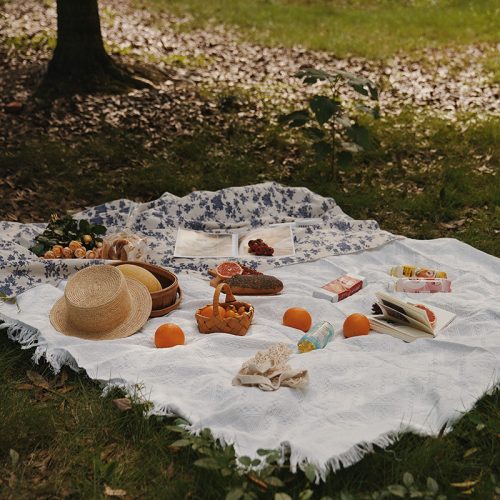The journey of wool blankets from sheep to sleep involves several steps, each crucial to creating a high-quality and comfortable product. Here’s an overview of the process:
- Sheep Shearing: The process begins with the shearing of sheep. Typically, this is done once a year, typically in the spring, when sheep have developed a new fleece. Shearing is done by skilled shearers who carefully remove the fleece without harming the sheep. The fleece is collected and sorted based on its quality.
- Wool Grading and Sorting: After shearing, the raw wool is graded and sorted. This involves separating the fleece into different categories based on factors such as fineness, color, and length of the fibers. Higher-quality wool is often reserved for premium blankets.
- Cleaning and Scouring: Raw wool contains grease, dirt, and other impurities. To prepare it for spinning and weaving, the wool is thoroughly cleaned through a process called scouring. This involves washing the wool with hot water and detergent to remove these impurities.
- Carding: After scouring, the wool is carded. Carding is a process where the wool fibers are brushed and aligned. This helps in creating a consistent and smooth texture for the yarn.
- Spinning: The carded wool is spun into yarn. This can be done using traditional spinning wheels or modern machinery. The spinning process twists the fibers together, creating a strong and continuous strand of yarn.
- Weaving: Once the yarn is ready, it is used to weave the fabric for the blanket. The type of weave used can vary, affecting the texture and appearance of the final product.
- Dyeing (if necessary): If colored wool blankets are desired, the yarn or fabric may be dyed using natural or synthetic dyes. Natural dyes are often preferred for their eco-friendliness.
- Finishing: After weaving and dyeing (if applicable), the fabric is finished. This can involve processes such as steaming, pressing, or brushing to achieve the desired texture and appearance.
- Quality Control: Throughout the production process, quality control checks are performed to ensure that the blankets meet the desired standards. Any imperfections are addressed before the blankets move on to the next stage.
- Cutting and Sewing: Once the fabric is ready, it is cut into the desired size and shape for the blankets. The edges are often finished with stitching to prevent fraying.
- Labeling and Packaging: The finished wool blankets are labeled with branding and care instructions. They are then packaged for distribution and sale.
- Distribution and Sale: The blankets are distributed to retailers or sold directly to consumers. Customers can choose from various styles, sizes, and designs to suit their preferences.
- Use and Enjoyment: Finally, the wool blankets find their way into homes, where they are used to provide warmth, comfort, and coziness during sleep or relaxation.
The journey from sheep to sleep highlights the intricate and meticulous process involved in creating high-quality wool blankets. It also emphasizes the importance of responsible and sustainable practices in sourcing and producing wool products.


